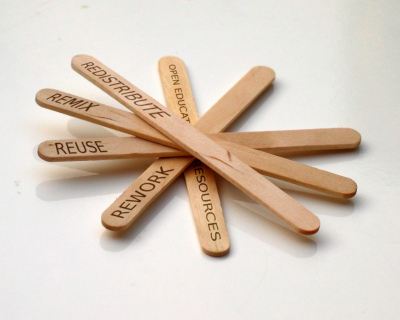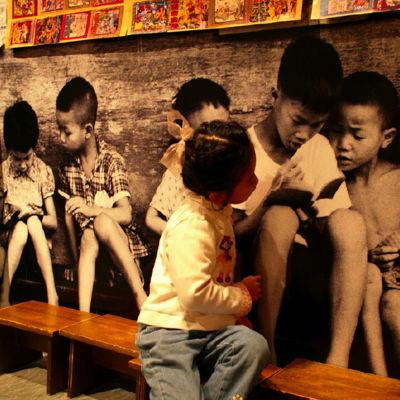Why OER?
| OER Handbook for educators | |
|---|---|
| Introduction | Defining OER | Why OER? | The Copyright Paradox | Considerations | Models and Approaches | OER Life Cycle |
Using OER is simple and rewarding!
With OER you are free to:
(Wiley, 2007) |
Each of these things can be done with traditionally copyrighted material, but requires more effort and resources.
The value proposition for OER
With OER you can, for example, browse online photo galleries, select appropriately licensed images, and use them to compose a poster or other learning resource for your own classroom. The result may be shared similarly, as an OER, for others to use in their own learning design without having to ask for permission.
As another example, think about being able to take a song and combine it with video of a local event to create a documentary that can be published online. If the music and video are suitably licensed, this is both possible and legal. It is made possible because people like you take the time to create and share OER.
This OER Handbook is a good example:
- All the images have been sourced or adapted from existing images whose license is compatible with the Handbook's license (Creative Commons Attribution-ShareAlike);
- Contributors from North America, Africa, Asia and the Pacific region have participated in its development.
- We have produced the handbook in shorter time frames and at a lower cost when compared to traditional publishing approaches, by saving time and money associated with copyright clearances.
This would not have been possible without remixable resources (text and images), and the free software used to combine them.
The advantages of OER extend beyond remixing existing resources. OER save time, since educators do not need to generate components from scratch. Some OER, especially those which provide complete courses, can compensate for teacher shortages, provided learners are sufficiently self-directed and have enough prior knowledge about the subject. Learners also have the benefit of being able to customize their learning experiences with OER. Finally, some OER can widen access to the work of leading institutions and world renowned teachers. For example, MIT OpenCourseWare[2] offers syllabi from one of the world's top technical institutions and arXiv.org[3] offers access to scientific papers from many of the world's top researchers.
Notes
- ↑ The Licensing section of the handbook provides more detail on how this is achieved.
- ↑ http://ocw.mit.edu/
- ↑ http://arxiv.org/

